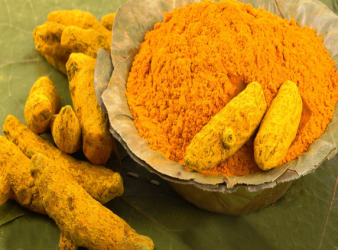
Project Info
- Year of Completion : 2017
- User Department : Directorate of Arecanut and Spices Development (DASD), Ministry of Agriculture, Government of India
Description
Background
India is the largest producer, consumer and exporter of turmeric in the world. Other major producers are Thailand, other Southeast Asian countries, Central and Latin America and Taiwan. The global production of turmeric is around 11 lakh MT per annum. India dominates the world production scenario contributing 78 % followed by China (8%), Myanmar (4%) and Nigeria and Bangladesh together contributing to 6% of the global production. In Telangana, the turmeric crop is being grown in an area of 42535 Hectares with a production of 1,842,85 MT during 2015-16. In Telangana, the four districts (erstwhile) viz. Nizamabad, Karimnagar, Warangal and Adilabad account for around 90% of the production of turmeric in the State.
Objective
Directorate of Arecanut and Spices Development (DASD), Ministry of Agriculture, GoI is running with a vision to expand the area under different spices includes turmeric in the country. On the request of the DASD, Centre for Good Governance, Hyderabad has conducted a study on the status of turmeric and its value chain in the erstwhile districts of Nizamabad, Adilabad, Karimnagar and Warangal. The specific objectives of the assignment were:
- To suggest measures for improving the value addition in turmeric at various stages of the value chain
- To study the varietal preferences of turmeric crop in relation to various stakeholders in turmeric value chain
- To study the feasibility of cluster approach for seed and commercial turmeric cultivation
Process
The entire study was divided into three phases
- The first phase was research phase, where secondary research of reports of Horticulture department, DASD, Spices Board, State Horticulture University, Agricultural & Processed Food Products Export Development Authority (APEDA) was undertaken, which helped to have an overview of turmeric area and production in Telangana, recommended turmeric production practices by State Horticulture University, Infrastructure and logistic facilities available in the study districts. The Secondary research was followed by the primary research, wherein the data was captured through Focus Group Discussions (FGDs) with farmers. Further, the primary data was also collected through personal interviews with Commission Agents, Aggregators, Trades, Processors, Cold storage owners in the district.
- The second phase – consolidation phase, in which the data captured through primary and secondary research was analysed and consolidated to arrive at some conclusions and recommendations.
- Third phase – reporting phase, where a draft report was prepared initially and presented to a review committee comprising of Commissioner, Horticulture, Ministry of Agriculture and Farmers’ Welfare, Govt. of India, Directors of DASD and Indian Institute of Spices Research (IISR) and officials of State Horticulture Department at Centre of Excellence, Hyderabad.
The Output
After incorporating the suggestions of the review committee the final report providing a comprehensive picture of turmeric production and processing was submitted to DASD.